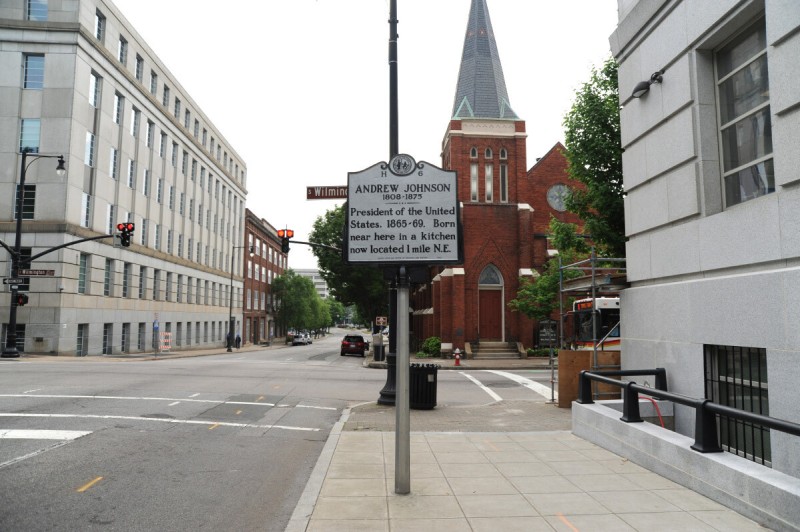
Andrew Johnson was born near here in 1808, in a kitchen, which is now a mile away, like the sign says.
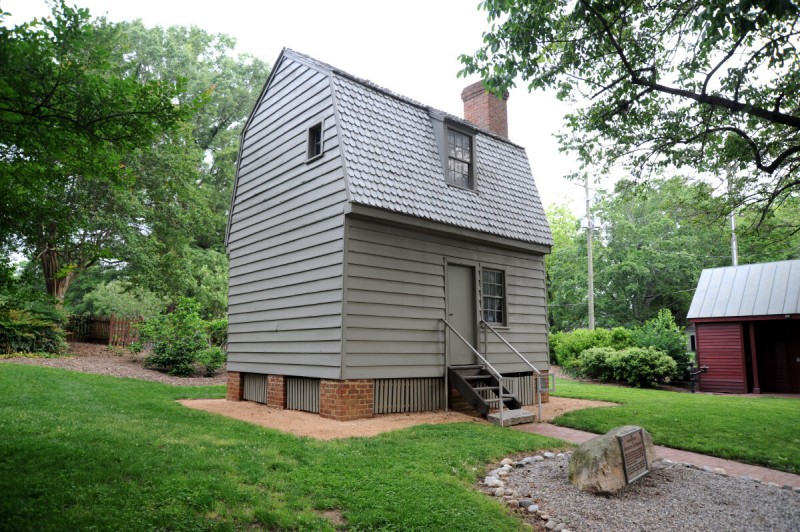
The kitchen was a small outbuilding, located behind the roadside inn and tavern where his parents worked. The rest of the inn is gone, but the kitchen structure has been preserved, and is located in a historic park.
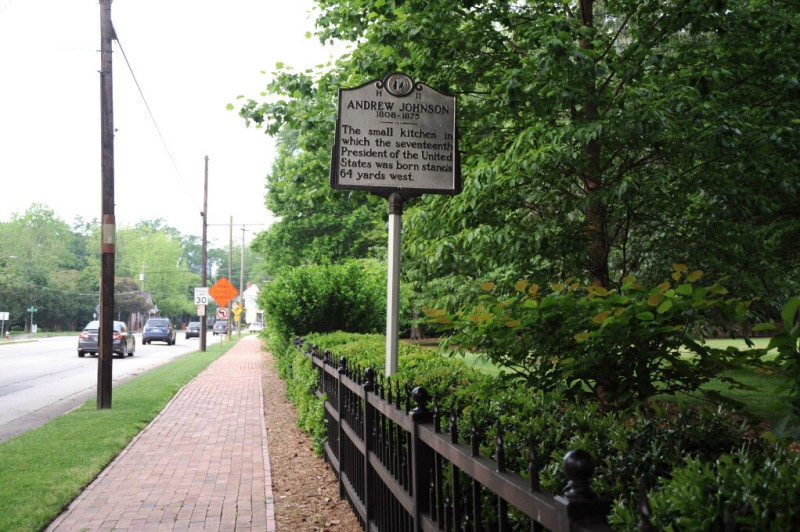
When it was displaced from its original location in the 1850s, making way for larger buildings downtown, the kitchen birthplace cabin moved around town a lot, perhaps reflecting local ambivalence about Johnson, who as president enforced Union policies put in place by his predecessor, Abraham Lincoln, at the end of the Civil War.


In the 1930s it was moved to state college property, and partially restored. It remained there until 1974, when it was moved to its present location, at Mordecai Historic Park, an unrelated historic area established to preserve the Mordecai Mansion, the oldest mansion in town still located on its original foundation.
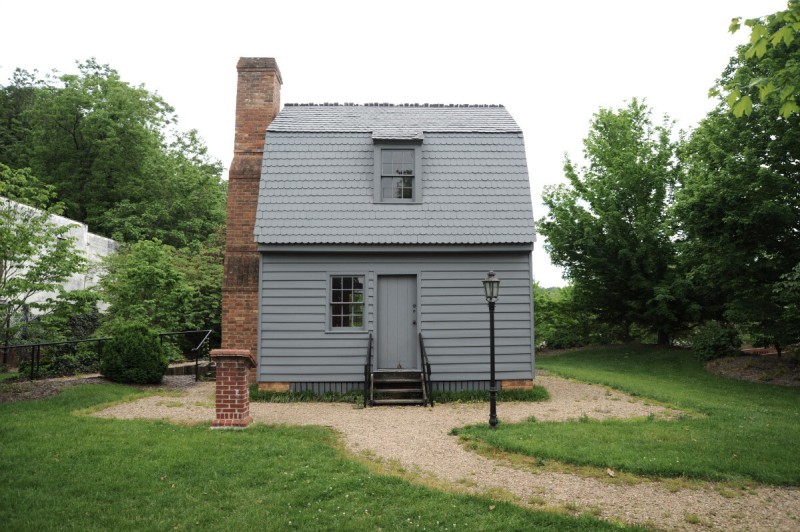
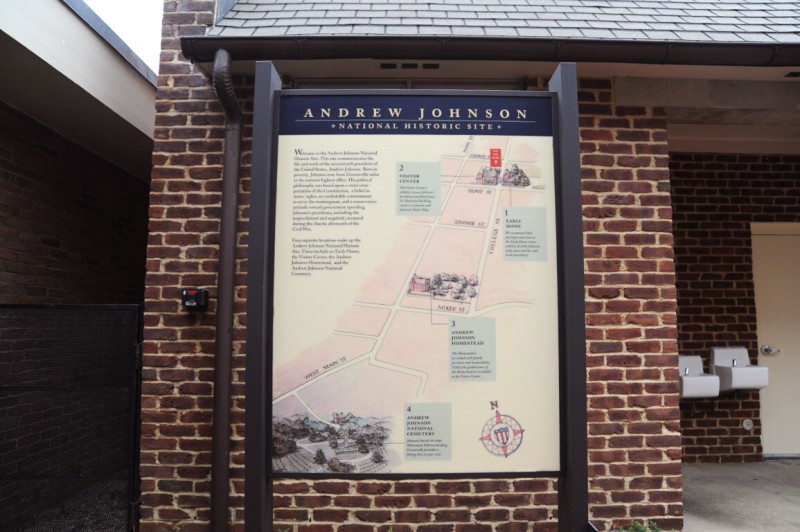

Johnson arrived in Greenville in 1826 as an 18 year old uneducated tailor’s apprentice. He opened a shop, married in 1827, and quickly prospered. In 1830 he moved to this brick house, and was elected mayor, beginning his political career.

This house, and his tailor shop, are preserved within the Historic Site, and have displays throughout.
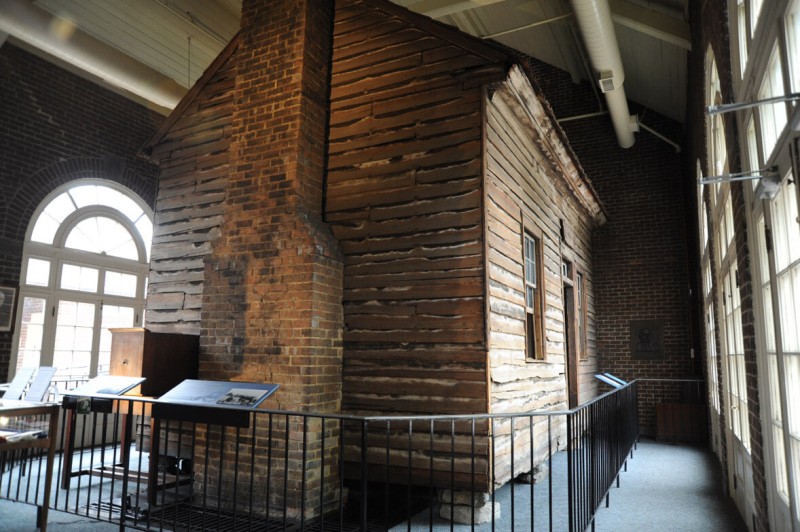
The entire tailor shop is inside a structure built around it by the state in 1923, and purchased by the National Park Service in 1963.
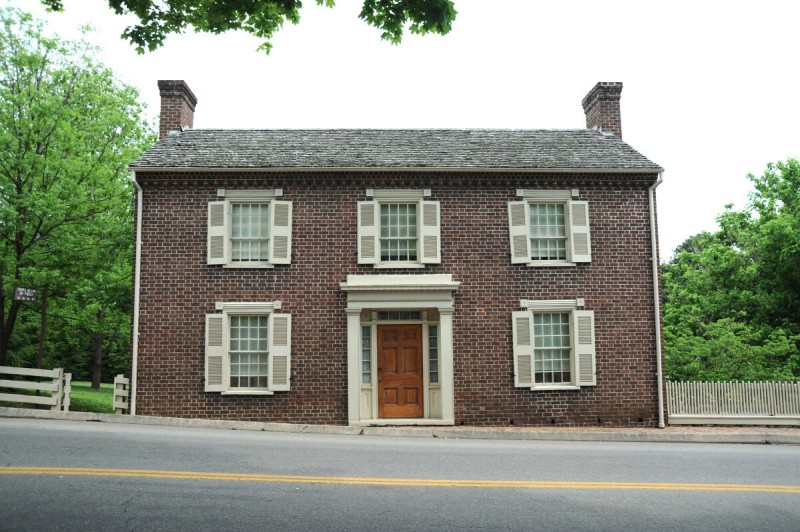
In 1851, Johnson moved his family into a bigger house a block and half away, which would be his home for the rest of his life. It too is preserved as part of the Historic Site, along with the grounds.

The replica of the birthplace kitchen was commissioned by Johnson’s great-granddaughter in 1980, and was originally at Tusculum College, where she went to school in the 1920s.
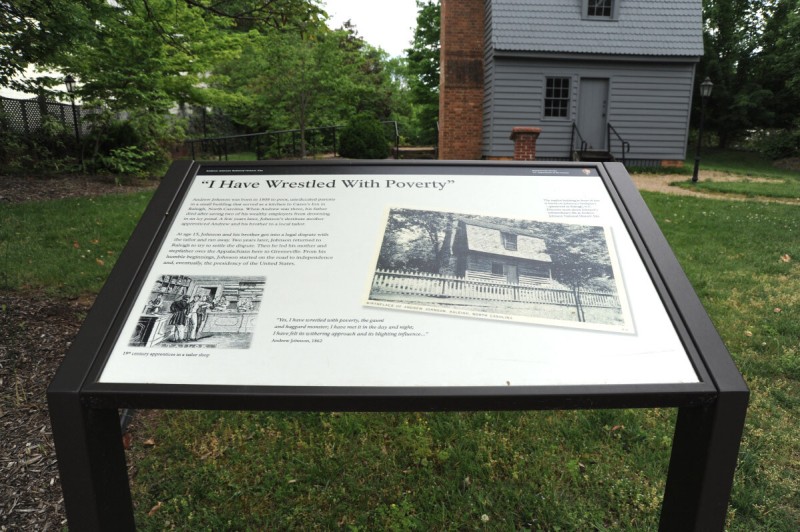
In 1999 the replica of the birthplace kitchen was moved to its present location, though just outside of National Park grounds, as it is not authentic, and is associated with another place entirely, Raleigh, North Carolina, 280 miles away.
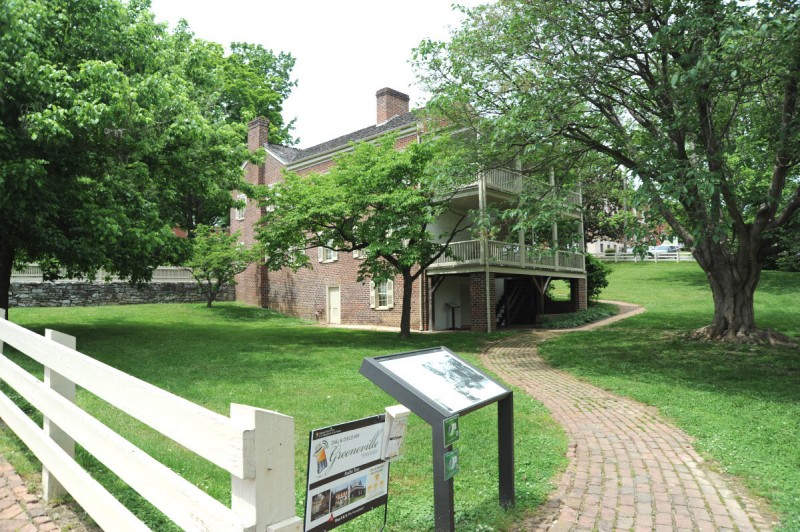

Johnson died in 1875 while visiting his daughter in Elizabethton, and is buried with his wife at his side, in a place he had selected in Greeneville. A few years later, his family placed a 21-foot marble column over the grave.
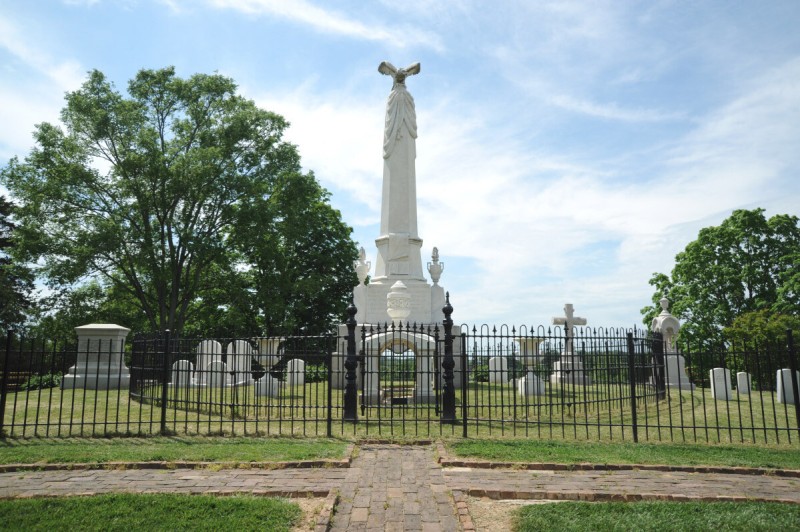
His descendants continued to occupy the homestead for another three generations, many of them joining him later in the cemetery at the top of the hill.
